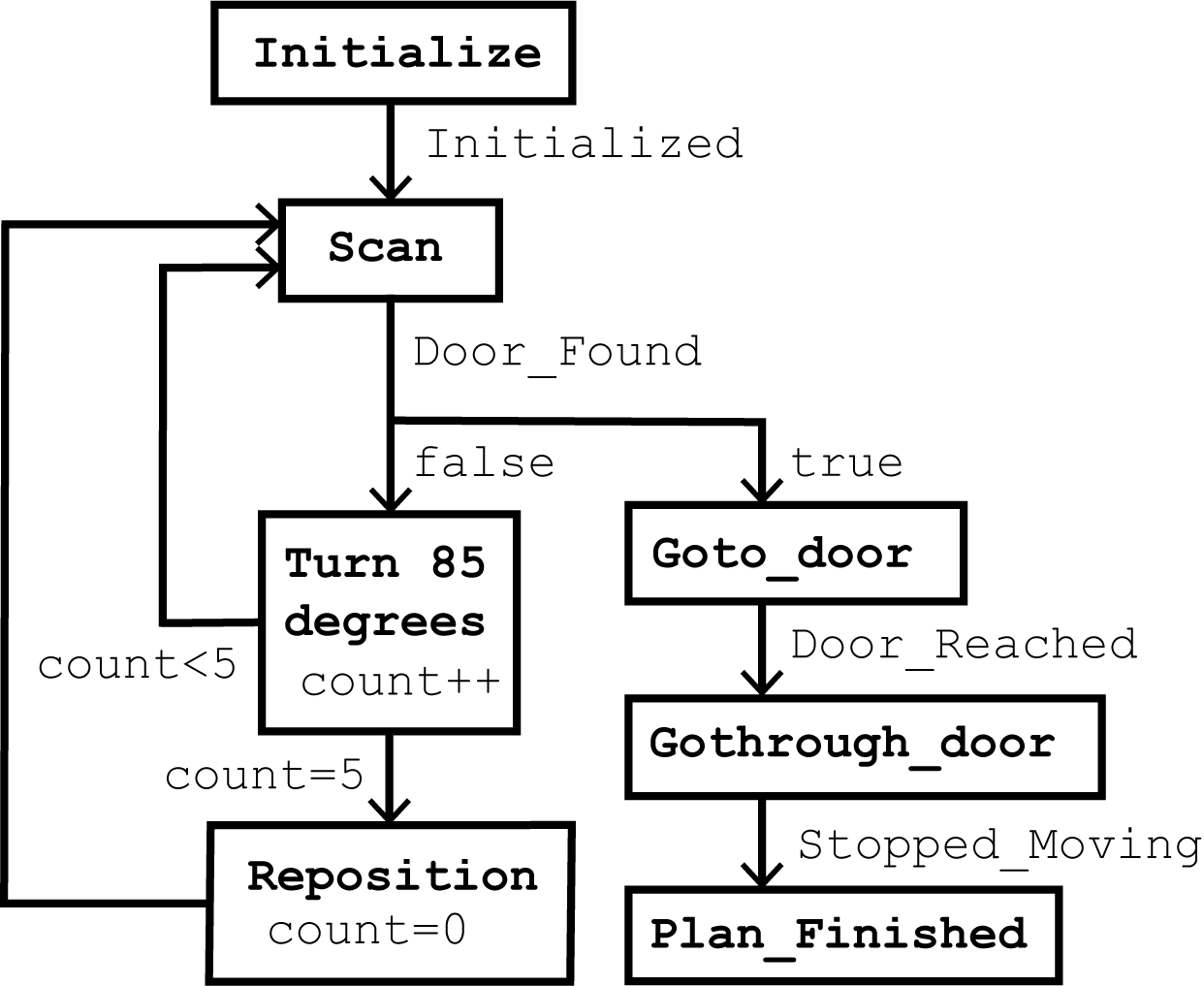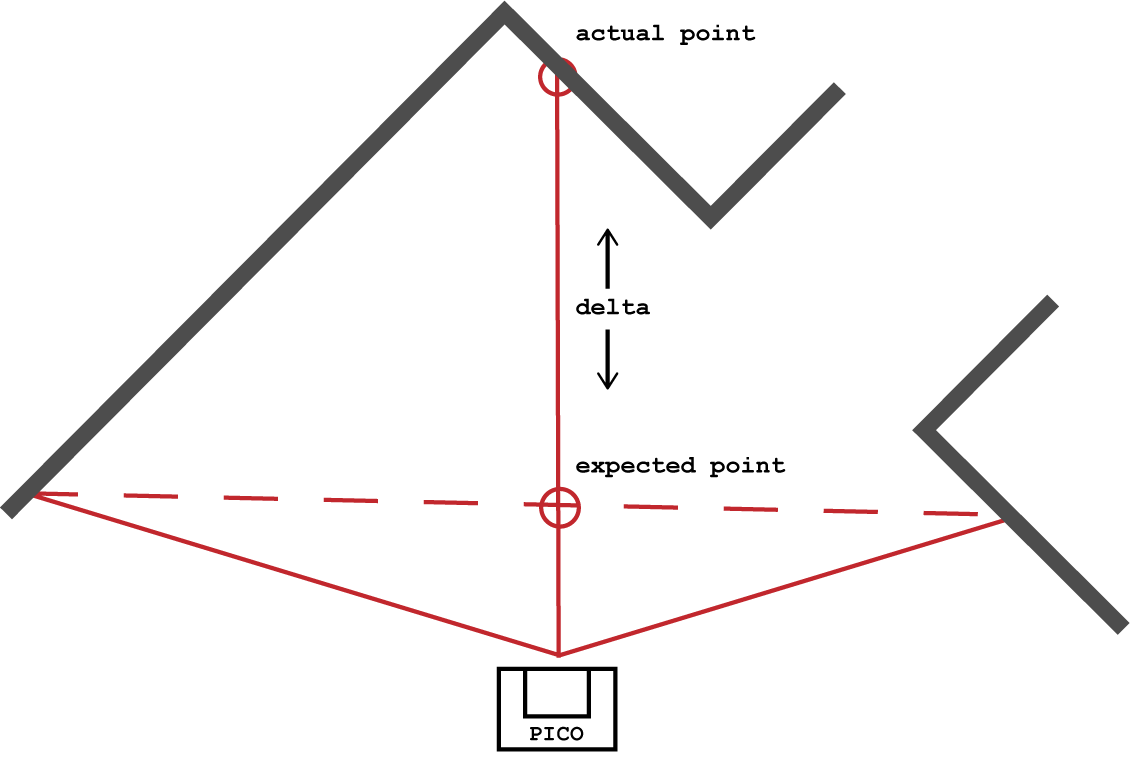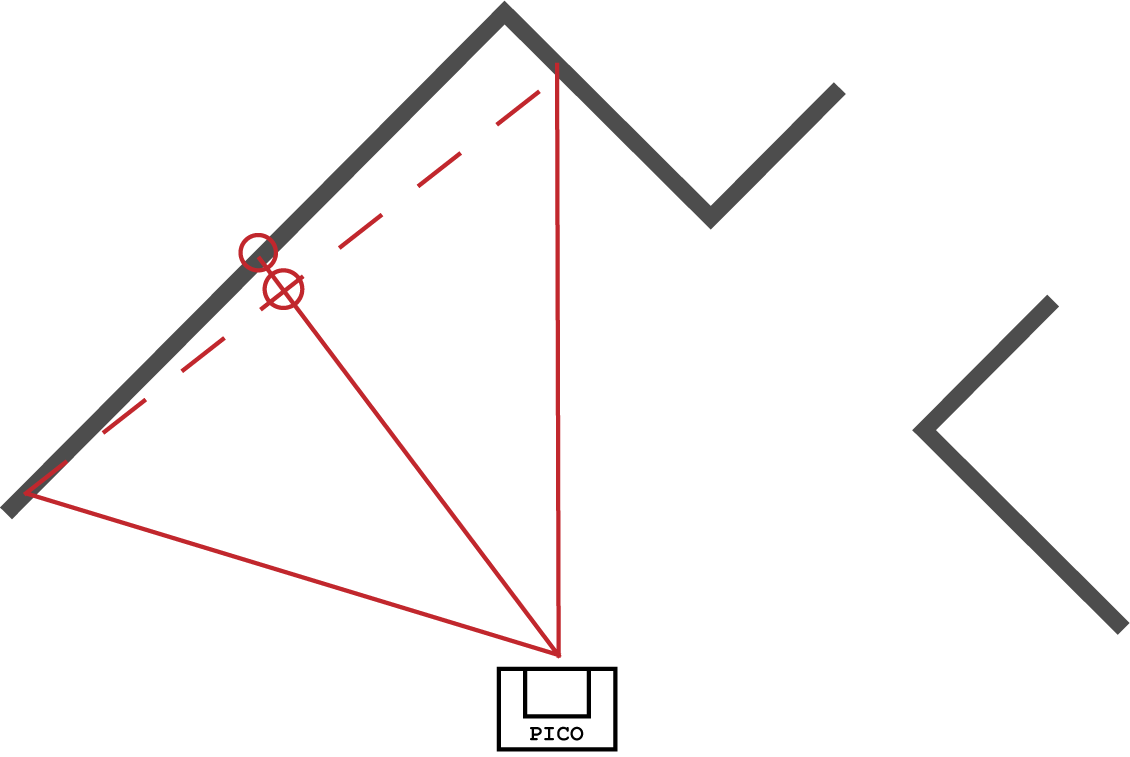Embedded Motion Control 2019 Group 4: Difference between revisions
m (→Finite state machine: Created figure gallery) |
(Added results of the escape room competition) |
||
| Line 66: | Line 66: | ||
<gallery> | <gallery> | ||
File:4SC020_group4_FSM_escapeRoom.png|Diagram of the finite state machine used in the escape room competition. | File:4SC020_group4_FSM_escapeRoom.png|Diagram of the finite state machine used in the escape room competition. | ||
File:4SC020_group4_FSM_escapeRoom_circular.png|Diagram of an improved FSM, | File:4SC020_group4_FSM_escapeRoom_circular.png|Diagram of an improved FSM, thought of after the competition. | ||
</gallery> | </gallery> | ||
| Line 74: | Line 74: | ||
*PICO Test 2 (2019-05-13) --> Goal: use a more advanced algorithm to detect and move. | *PICO Test 2 (2019-05-13) --> Goal: use a more advanced algorithm to detect and move. | ||
*PICO Test 3 (2019-05-16) --> Goal: Test improvements done based on competition results. If available, test ideas that were previously generated but would only be useful for the final competition. | *PICO Test 3 (2019-05-16) --> Goal: Test improvements done based on competition results. If available, test ideas that were previously generated but would only be useful for the final competition. | ||
= Escape Room Competition = | |||
In the escape room competition, we were potentially the team that had the highest high and the lowest low. | |||
The algorithm we had designed worked perfectly and very quickly. The door was found as soon as it came into view, and PICO decided to move toward the correct location in front of the door. The door was then immediately found again, and PICO's position in front of the door was made more accurate. Then, the exit of the hallway was detected immediately, and PICO drove towards its end goal. | |||
However, due to the fact that we had not managed to implement the odometry into PICO, distances traveled were around 30% too short, meaning PICO stopped well before the detected end of the exit hallway. In addition, telling PICO to drive straight didn't actually make it drive straight, making it graze the wall. | |||
The first improvement we will need to make is the odometry, as we're confident PICO would have exited the room within 30 seconds if it actually was were it thought it was. Secondly, we should use the laser data more frequently, and create new plans during movement to keep things moving in the right direction. Improving the finite state machine to use fewer states and being more circular might also be a good addition. | |||
= Tips & tricks = | = Tips & tricks = | ||
[https://stackoverflow.com/questions/48147356/install-qt-on-ubuntu Install Qt] | [https://stackoverflow.com/questions/48147356/install-qt-on-ubuntu Install Qt] | ||
Revision as of 11:28, 18 May 2019
This is the CSTWiki page for group 4 of Embedded Motion Control 2019.
Group members
| Marcel Bosselaar | 0906127 |
| Ruben Sommer | 0910856 |
| Jeroen Setz | 0843356 |
| Bram Grolleman | 0757428 |
| Martijn Tibboel | 0909136 |
Deliverables
Minutes
Ideas Escape room
The following ideas are used for the excecution of the Escape room.
Plan
The initial strategy that is formulated is as follows:
This plan is updated to gain more insights and control over the different situations that can happen.
[PLAATJE]
Exit recognition
Firstly walls are created from the lrf data. Next, these small walls are merged into large walls. For this, the 'split and merge' method is used as shown below.
Then the corners are recognized. The 2 different kind of corners are recognized and from the right kind of corners the exit is generated. This is visualised below.
At last, the center point of the exit is calculated together with a point in front of this center point. This point in front is sent to the movement part of the PICO.
Finite state machine
A finite state machine is introduced in order to maintain control over what is happening at all times.
After the challenge, an alternative FSM was thought of that reduces the number of states required and vastly improves accuracy.
Testing
The following testing dates are set. Also the goal of each testing date is put behind in order to stay on track of the global planning of the project.
- PICO Test 1 (2019-05-08) --> Goal: have PICO detect the exit, and perform simple motion towards it.
- PICO Test 2 (2019-05-13) --> Goal: use a more advanced algorithm to detect and move.
- PICO Test 3 (2019-05-16) --> Goal: Test improvements done based on competition results. If available, test ideas that were previously generated but would only be useful for the final competition.
Escape Room Competition
In the escape room competition, we were potentially the team that had the highest high and the lowest low.
The algorithm we had designed worked perfectly and very quickly. The door was found as soon as it came into view, and PICO decided to move toward the correct location in front of the door. The door was then immediately found again, and PICO's position in front of the door was made more accurate. Then, the exit of the hallway was detected immediately, and PICO drove towards its end goal.
However, due to the fact that we had not managed to implement the odometry into PICO, distances traveled were around 30% too short, meaning PICO stopped well before the detected end of the exit hallway. In addition, telling PICO to drive straight didn't actually make it drive straight, making it graze the wall.
The first improvement we will need to make is the odometry, as we're confident PICO would have exited the room within 30 seconds if it actually was were it thought it was. Secondly, we should use the laser data more frequently, and create new plans during movement to keep things moving in the right direction. Improving the finite state machine to use fewer states and being more circular might also be a good addition.




